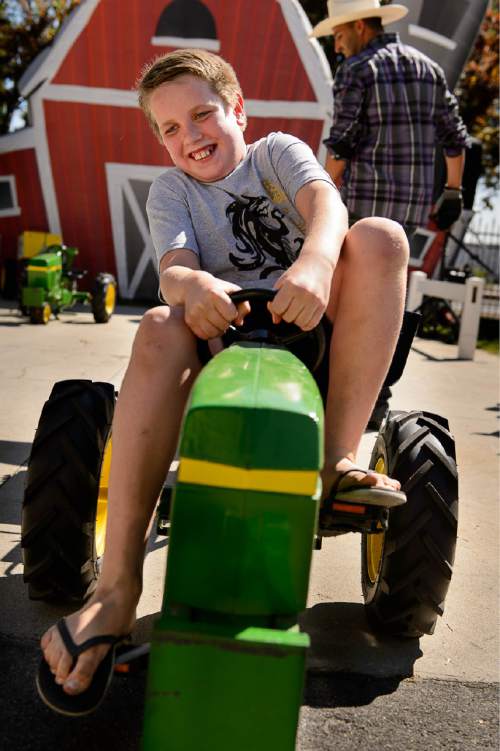This is an archived article that was published on sltrib.com in 2015, and information in the article may be outdated. It is provided only for personal research purposes and may not be reprinted.
Leaders of the Utah State Fair made an opening pitch Friday to renew their lease on the fairgrounds and put the yearly 11-day event on a healthier financial path.
They met with state lawmakers as the 2015 fair entered the second day of its 160th year, with a shadow of uncertainty hanging over the traditional celebration of agrarian life.
Fair managers rent the 66-acre Utah State Fairpark and buildings on North Temple and 1000 West in Salt Lake City from the state for a nominal fee, but the current contract expires in 2017.
State officials still have not agreed to renew the arrangement amid questions about the fair's finances and the potential value of choice real estate it sits on.
The stalemate has raised a possibility the Utah State Fair might have to move or close down.
"Let us do the job we were given to do," the fair board's chairman, Roger Beattie, told a group of legislators Friday. "We can't do anything without that lease."
The Legislature privatized the fair in 1995, putting management of the event along with the Fairpark grounds and its 27 aging buildings in the hands of the fair board, with members appointed by Gov. Gary Herbert.
But with the lease renewal in limbo, Beattie said, lucrative multiyear rental contracts with event sponsors and users of the Fairpark's buildings, exhibition spaces and other facilities have not been signed. The job of fair executive director is being filled temporarily by board member Ted Lewis. A new multipronged business and marketing plan for bringing in new events and sponsors and more revenue is on hold.
"Our hands," said Beattie, "are tied."
The fair's plight is of grave concern to the wider Fairpark neighborhood on Salt Lake City's west side, several community leaders said. One legislator representing the area said few issues raised as much emotion among residents as the prospect of losing the fair.
"There is a sense of identity for them," said Rep. Rebecca Chavez-Houck, D-Salt Lake City.
With attendance of about 300,000 each year, the yearly mid-September Utah State Fair is a money-making event, fair board member Maura Carabello said. But year-round operation of the Fairpark and its antiquated facilities more than gobbles up what the fair earns, Carabello said.
After 20 years of postponed maintenance, she and others said, the Fairpark and its facilities are in need of more than $30 million in upgrades.
The ad hoc group of lawmakers, led by Sen. Kevin Van Tassell and Rep. Mike McKell, will make a recommendation on the lease to Herbert and the Legislature's main budget committee by year's end.
Lawmakers have raised concerns about the annual taxpayer subsidies the Fairpark has needed to keep it operating, with allocations from state coffers between $270,000 and $893,300 per year since 1997.
The site is also considered by some as a prime locale for commercial development. It is 10 minutes from both downtown and Salt Lake City International Airport, has Jordan River frontage and is now on a TRAX line.
Van Tassell, R-Vernal, said those have left some on Capitol Hill unconvinced that the fair can or should remain at the Fairpark.
"We're going to need some more help to muscle this through," Van Tassell said.
Legislators were buoyed by news that organizers of the Days of '47 celebrations had expressed an interest in relocating some of their Pioneer Day events to the Fairpark. Sen. Scott Jenkins, R-Plain City, said with Days of '47 organizers onboard, "the deal would sell itself."
Friday's discussion also included ideas for issuing state-backed revenue bonds to fund fair building repairs, bringing in private developers as partners in refurbishing existing buildings and building a long-sought stadium and exhibition hall.
The fair board also is exploring ways of boosting fair attendance, Carabello said, while making the scores of events hosted at the Fairpark during the rest of the year more profitable.
The ad hoc group will meet again in October to further craft its recommendations.





